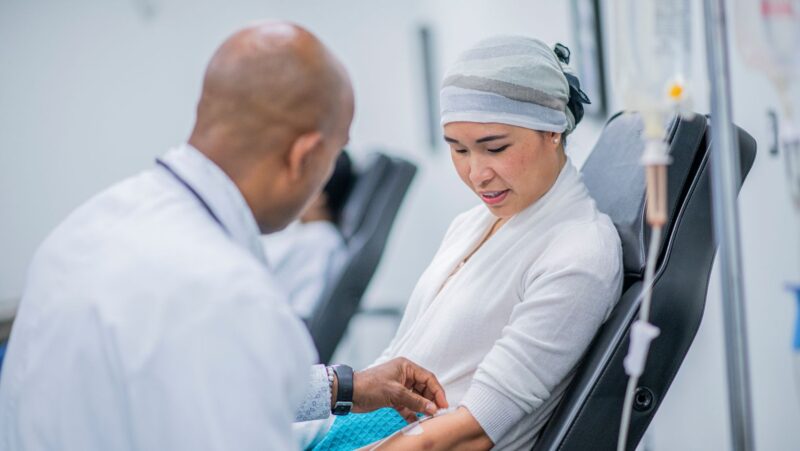
Monitoring your blood sugar levels is critical in managing diabetes or prediabetes. Whether you’re newly diagnosed or have been living with the condition for years, regular testing of your glucose (sugar) levels can help to ensure that you maintain optimal health and avoid long-term complications.
In this article, we’ll discuss the process of regularly monitoring blood sugar and how it relates to managing diabetes care plans. We’ll also provide an overview of the various current methods for tracking this crucial vital metric to stay informed about short-term gains and potential long-term risks associated with high or low glucose readings.
What is Blood Sugar And How Important is it to Monitor it Regularly
Blood sugar refers to the concentration of glucose circulating in the bloodstream at any given time. It is a crucial element in maintaining overall health and well-being, as it is the primary energy source for the body’s cells. The body employs a complex system to ensure that blood sugar levels remain within a healthy range, but deviations can have severe consequences.
Therefore, Regular blood sugar monitoring is essential for individuals with diabetes or those at risk of developing the disease. Consistent monitoring can help individuals to identify trends over time, make appropriate lifestyle changes, and seek medical attention if necessary. Maintaining healthy blood sugar levels is critical in preventing complications such as organ damage and, in extreme cases, life-threatening conditions.
Understanding The Different Types of Glucose Tests (HbA1C, Fasting Plasma Glucose)
The two most commonly used tools for monitoring blood sugar levels are the Hemoglobin A1C (HbA1C) and Fasting Plasma Glucose (FPG) tests. The HbA1C test measures average glucose levels over time, typically about three months. This type of testing can help evaluate long-term glucose levels and is often used to detect prediabetes or diabetes in people with no symptoms.
The FPG test, however, measures blood sugar levels after an overnight fast and can provide a more accurate representation of short-term fluctuations. It’s most commonly used to diagnose diabetes. Although both tests are essential for monitoring blood sugar levels, the FPG test is generally recommended more frequently for individuals with diabetes, as it can help to identify and address any changes in glucose levels that may occur. With ozempic coupons, you can save money on your diabetes medication and get back to monitoring your blood sugar.
Benefits of Regularly Monitoring Your Blood Sugar Levels
Maintaining healthy blood sugar levels is critical for individuals with diabetes or prediabetes. Regular glucose monitoring can help you more quickly identify lifestyle patterns that may cause fluctuations, such as dietary choices, physical activity, and stress levels. Tracking your glucose levels over time also allows you to adjust your diabetes care plan if needed to ensure it remains effective.
Regular monitoring of blood sugar levels can also provide critical feedback to your doctor regarding adjusting medication dosages or switching medications altogether. By understanding the impact of certain medications and lifestyle changes on glucose levels, you can better manage your condition and be proactive about potential health risks.
Finally, regular blood sugar level testing can help reduce the risk of long-term complications associated with diabetes, such as heart disease, stroke, Chronic Kidney Disease (CKD) Stage 3, and nerve damage. By having more control over your blood sugar levels through regular testing and careful management, you can reduce these risks and maintain a healthier quality of life in the long run.
Tips For Maintaining Healthy Blood Sugar Levels
Although regular testing is essential for managing diabetes, certain lifestyle habits can help to maintain healthy blood sugar levels. Eating a balanced diet rich in whole grains, lean proteins, and fresh fruits and vegetables is a great place to start. It’s also important to stay hydrated throughout the day and limit your intake of sugar-sweetened beverages. Incorporating regular physical activity into your routine and managing stress levels can also positively impact your glucose readings.
Finally, it is essential to keep track of your blood sugar levels regularly. Make sure to use a reliable device for measuring and recording your glucose readings, and keep an up-to-date logbook that includes notes about any other relevant lifestyle factors. Doing so can help you better understand trends and make necessary changes to maintain a healthy blood sugar level over time.
Standard Tests to Monitor Diabetes Risk Factors (Blood Pressure, Cholesterol)
In addition to tracking blood sugar levels, individuals with diabetes or prediabetes should also monitor other risk factors for heart disease and stroke. It includes regularly checking your blood pressure and cholesterol levels.

High blood pressure is a significant risk factor for people with diabetes, as it can place additional strain on the cardiovascular system. Blood pressure tests are relatively straightforward and can be performed at home or during a visit to your doctor. Regular blood pressure monitoring is essential for identifying potential problems and taking steps to keep them within a healthy range.
Cholesterol tests, which measure levels of HDL (“good cholesterol”) and LDL (“bad cholesterol”), are also crucial for individuals with diabetes. High LDL cholesterol levels can increase the risk of heart disease, stroke, and other severe conditions. Keeping track of your cholesterol readings and blood sugar levels can help you better manage diabetes-related health risks.












